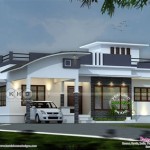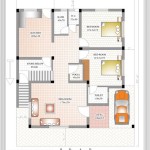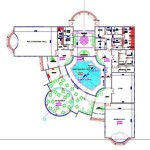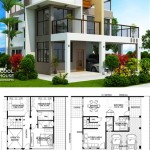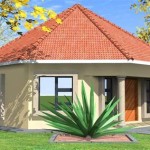Log Cabin Style House Plans: A Comprehensive Overview
Log cabin style house plans evoke images of rustic charm, natural materials, and a connection to the outdoors. However, modern log cabin design has evolved far beyond the simple, one-room structures of the past. Today's log cabin plans offer a wide range of sizes, floor plans, and architectural styles, incorporating modern amenities and energy-efficient features while retaining the aesthetic appeal of a traditional log home. Selecting the right log cabin style house plan requires careful consideration of individual needs, budget, and site conditions. This article provides a comprehensive overview of various aspects of log cabin house plans, including different styles, key considerations in the planning process, and common features.
Understanding Different Styles of Log Cabin House Plans
The term "log cabin" encompasses a broad spectrum of architectural styles, each with its own distinct characteristics. While the core element remains the use of logs as a primary building material, the overall design, roofline, and interior layout can vary significantly. Understanding these variations is crucial for selecting a plan that aligns with personal preferences and functional requirements.
Traditional Log Cabins: These cabins typically feature a simple rectangular or square floor plan, often with a single story and a loft area. The logs are usually left exposed both inside and out, showcasing the natural beauty of the wood. Rooflines are generally simple gable roofs. Traditional log cabins often prioritize functionality and affordability over elaborate design features.
Contemporary Log Homes: Modern log homes incorporate contemporary design elements such as large windows, open floor plans, and sleek finishes. While logs remain a prominent feature, they may be combined with other materials like stone, glass, and steel. Rooflines may be more complex, including shed roofs, dormers, and multiple gables. Contemporary log homes often prioritize natural light, energy efficiency, and indoor-outdoor living.
Hybrid Log Homes: Hybrid log homes blend log construction with conventional framing techniques. This approach allows for greater flexibility in design and construction, enabling homeowners to create unique and customized floor plans. Log accents, such as log siding or log posts and beams, are often used to create the look of a traditional log cabin without the cost or complexity of a full log structure. Hybrid log homes offer a balance between the rustic aesthetic of log construction and the versatility of conventional building methods.
Timber Frame Homes: Although not strictly "log cabins," timber frame homes share a similar aesthetic and construction process. Timber frame homes utilize heavy timber framing, with large posts and beams connected by mortise-and-tenon joinery. The spaces between the timbers are typically filled with insulated panels or other materials. Timber frame homes offer a durable and energy-efficient alternative to log construction, with a similar rustic appeal.
Key Considerations When Selecting a Log Cabin House Plan
Choosing the right log cabin house plan involves a multifaceted process that takes into account various factors, including site characteristics, budget constraints, and lifestyle preferences. Ignoring these elements can lead to costly mistakes and dissatisfaction with the final product. A well-considered plan is paramount to a successful log cabin build.
Site Evaluation: The characteristics of the building site play a crucial role in determining the suitability of a log cabin house plan. Factors such as topography, soil conditions, and exposure to sunlight and wind should be carefully evaluated. Steep slopes may require specialized foundation designs, while poor soil conditions can impact the structural integrity of the cabin. The orientation of the cabin should be optimized to maximize solar gain in the winter and minimize heat gain in the summer. Local building codes and zoning regulations must also be considered. Easements and setbacks may limit the size and placement of the cabin on the property. A thorough site evaluation can help ensure that the chosen plan is appropriate for the specific location.
Budget Considerations: Building a log cabin can be a significant investment, and it is essential to establish a realistic budget before selecting a house plan. The cost of materials, labor, and site preparation can vary widely depending on the size, complexity, and location of the cabin. Log cabin construction can sometimes be more expensive than conventional building due to the specialized skills and equipment required. Hidden costs like landscaping, driveways, and utility connections should also be factored into the budget. Obtaining multiple quotes from reputable contractors can help to establish a realistic cost estimate and avoid unexpected expenses. It is often advantageous to prioritize essential features over luxury items to stay within budget.
Floor Plan and Lifestyle: The floor plan of a log cabin should reflect the lifestyle and needs of the inhabitants. Consider the number of bedrooms and bathrooms required, as well as the size and layout of the living spaces. Open floor plans are popular in modern log homes, as they promote social interaction and create a sense of spaciousness. However, some people prefer more traditional floor plans with defined rooms. The arrangement of the kitchen, dining area, and living room should be carefully considered to ensure optimal functionality and flow. Accessibility is another important consideration, especially for individuals with mobility limitations. Single-story log cabins or cabins with ramps and wider doorways can provide greater accessibility. The location and size of windows and doors should be carefully planned to maximize natural light and ventilation. Consider the need for storage space, both inside and outside the cabin. Storage areas for firewood, tools, and outdoor equipment are essential for maintaining a tidy and functional living space.
Energy Efficiency: Log cabins can be energy-efficient homes if designed and built correctly. Log walls provide natural insulation, but additional insulation may be required in colder climates. Proper sealing of windows and doors is essential to prevent air leaks. Energy-efficient windows and doors can significantly reduce heating and cooling costs. Consider the use of passive solar design principles to maximize solar gain in the winter and minimize heat gain in the summer. A well-insulated roof is crucial for maintaining a comfortable indoor temperature. Energy-efficient heating and cooling systems, such as heat pumps or geothermal systems, can further reduce energy consumption. Consider installing solar panels to generate electricity and reduce reliance on the grid. Proper ventilation is essential for maintaining indoor air quality and preventing moisture problems. Whole-house ventilation systems can provide a continuous supply of fresh air. A comprehensive energy-efficiency strategy can significantly reduce operating costs and improve the overall comfort of the log cabin.
Common Features of Log Cabin House Plans
While log cabin designs vary greatly, certain features are commonly incorporated into these structures to enhance their aesthetic appeal and functionality. These features contribute to the overall charm and rustic character of a log cabin home.
Exposed Log Walls: Exposed log walls are a defining characteristic of log cabin architecture. The logs can be left unfinished or treated with a sealant to protect them from the elements. The natural texture and color of the wood add warmth and character to the interior of the cabin. Different log profiles, such as round logs, square logs, and D-shaped logs, can be used to create different aesthetic effects. Chinking, the material used to fill the gaps between the logs, can also be customized to match the overall style of the cabin.
Stone Fireplace: A stone fireplace is a classic feature of log cabins, providing a source of heat and a focal point for the living room. The fireplace can be built from natural stone, brick, or manufactured stone veneer. The size and design of the fireplace can be customized to suit the size and style of the cabin. A wood-burning fireplace can provide a cozy and inviting atmosphere, while a gas fireplace offers greater convenience and efficiency.
Porches and Decks: Porches and decks are essential for enjoying the outdoors and extending the living space of a log cabin. A covered porch provides a sheltered area for relaxing and entertaining, while an open deck offers a sunny spot for grilling and sunbathing. The size and design of the porch or deck should be carefully considered to maximize its functionality and aesthetic appeal. Railings can be constructed from wood, metal, or composite materials. Screening can be added to the porch to provide protection from insects. Consider incorporating outdoor lighting to create a welcoming atmosphere at night.
Loft Areas: Loft areas are a common feature in log cabins, providing additional living space, storage, or sleeping quarters. Lofts are typically accessed by a staircase or ladder. The size and configuration of the loft can be customized to suit the needs of the occupants. Lofts can be used as bedrooms, offices, or recreational areas. Proper ventilation and lighting are essential for creating a comfortable and functional loft space. A railing or balustrade is required for safety.
Cathedral Ceilings: Cathedral ceilings create a sense of spaciousness and grandeur in log cabins. The exposed beams and rafters add to the rustic charm of the interior. Cathedral ceilings can be incorporated into the living room, dining room, or other areas of the cabin. Proper insulation is essential for maintaining a comfortable temperature and preventing heat loss. Consider incorporating skylights to provide natural light and ventilation.
Selecting the right log cabin style house plan is a significant undertaking that requires careful planning and consideration. By understanding the different styles of log cabins, the key factors to consider when selecting a plan, and the common features of log cabin design, individuals can make informed decisions and create a log cabin home that meets their needs and reflects their personal style. Further research and consultation with experienced professionals can help ensure a successful and rewarding log cabin building experience.

10 Bedroom Log Cabin Floor Plans Ideas House Home

Cabin Style House Plan 3 Beds 2 Baths 1659 Sq Ft 47 437 Plans Lake Sims

Aspen Lodge Luxury Craftsman Style House Plan 2439

Standout Log Cabin Plans Escape To An Earlier Gentler Time

Stone Mountain Cabin Plans Tiny House Blog Sims

Cottage Style House Plans Custom English Home Designs

Custom Log Home Floor Plans Katahdin Homes

Log Cabin Home Floor Plans Battle Creek Homes Tn Nc Ky Ga

Dog Trot House Plan Dogtrot Home By Max Fulbright Designs Cottage Plans

Small Cabin House Plans With Loft And Porch For Fall Houseplans Blog Com


